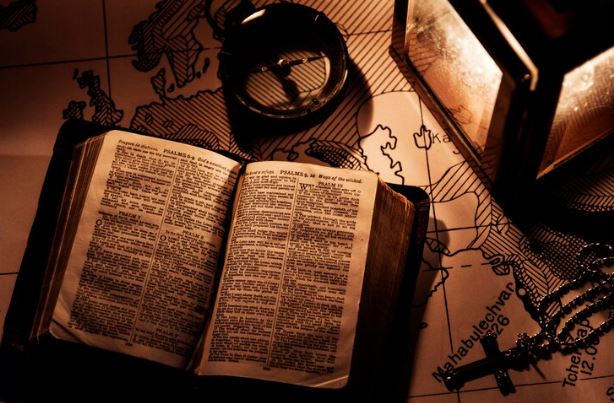
China Introduction
China, a nation steeped in history and innovation, stands as a captivating mosaic of ancient traditions and modern achievements. In this detailed exploration, we will navigate through the intricate layers of Chinese culture, government, sports, notable personalities, art, and renowned places, unraveling the country’s profound impact on the global stage.
I. Cultural Extravaganza
China’s cultural tapestry is woven with threads of ancient philosophy, traditional arts, and diverse customs.
A. Confucian Philosophy
Examining the enduring influence of Confucianism on Chinese society, emphasizing principles of morality, social harmony, and familial duty.
B. Traditional Arts
- Delving into classical Chinese arts such as calligraphy, ink painting, and traditional music, each reflecting centuries-old techniques and symbolism.
C. Festivals and Celebrations
- Exploring major festivals like the Spring Festival (Chinese New Year), Mid-Autumn Festival, and Dragon Boat Festival, with insights into their cultural significance.
II. Government and Governance
China’s political landscape is characterized by its unique system and strategies for governance.
A. Political Structure
- Understanding the one-party socialist system led by the Chinese Communist Party (CCP), its hierarchy, and the role of the President and Premier.
B. Economic Reforms
- Tracing China’s transformative journey from a centrally planned to a socialist market economy, with a focus on key economic policies and milestones.
C. Belt and Road Initiative (BRI)
- Evaluating the global impact of China’s ambitious infrastructure and economic development project, fostering connectivity across continents.
III. Sports Spectacle
China has emerged as a powerhouse in various sports, making significant contributions to the international sports arena.
A. Olympic Dominance
- Highlighting China’s prowess in the Olympic Games, particularly in events like table tennis, badminton, and gymnastics.
B. Rise of Basketball
- Exploring the surge in popularity of basketball in China, with the NBA gaining a massive fan base and Chinese players making their mark.
C. Soccer Ambitions
- Discussing China’s efforts to boost soccer’s popularity and competitiveness, including investments in domestic leagues and international talent.
IV. Icons and Influencers
China has produced iconic figures who have left an indelible mark on the world stage.
A. Confucius and Laozi
- Examining the enduring influence of ancient philosophers Confucius and Laozi on Chinese thought and philosophy.
B. Chairman Mao Zedong
- Delving into the life and impact of Mao Zedong, founding father of the People’s Republic of China, and his role in shaping modern China.
C. Global Entrepreneurs
- Spotlighting contemporary figures like Jack Ma and Pony Ma, whose contributions to technology and business have garnered global attention.
V. Artistic Expression and Entertainment
China’s artistic landscape is a fusion of tradition and innovation, with a vibrant entertainment industry.
A. Peking Opera and Traditional Performances
- Exploring the traditional performing arts, including Peking Opera and shadow puppetry, as expressions of cultural heritage.
B. Contemporary Cinema
- Examining the rise of Chinese cinema on the global stage, with directors like Zhang Yimou and films like “Crouching Tiger, Hidden Dragon.”
C. Technological Innovations
- Highlighting China’s role in the global tech industry, from e-commerce giants like Alibaba to innovative startups.
VI. Famous Places of China
China boasts a diverse range of landscapes and historical landmarks that beckon travelers from around the globe.
A. The Great Wall of China
- Unveiling the majesty and historical significance of the Great Wall, an architectural marvel stretching across northern China.
B. The Forbidden City, Beijing
- Exploring the imperial palace complex, a UNESCO World Heritage Site, and its significance in Chinese history.
C. Zhangjiajie National Forest Park
- Introducing the stunning landscapes of Zhangjiajie, inspiration for the floating mountains in James Cameron’s “Avatar.”
VII. Climate and Geographic Diversity
China’s vast expanse encompasses a range of climates and geographic features.
A. Diverse Climates
- Discussing the varied climates, from the frozen landscapes of Heilongjiang to the tropical regions of Hainan, and their impact on lifestyles.
B. Geographic Wonders
- Exploring natural wonders like the Karst Mountains, the Three Gorges, and the Yellow Mountains, showcasing China’s geographical diversity.
VIII. Impact on the World Stage
China’s global influence extends beyond its borders, impacting international affairs in various realms.
A. Economic Impact
- Assessing China’s role as an economic powerhouse and its impact on global trade and investment.
B. Technological Advancements
- Examining China’s contributions to technology, including advancements in artificial intelligence, 5G, and space exploration.
C. Diplomatic Relations
- Discussing China’s evolving diplomatic relationships, participation in international organizations, and its Belt and Road Initiative’s global implications.
IX. Cultural Extravaganza
China’s cultural tapestry is woven with threads of ancient philosophy, traditional arts, and diverse customs.
A. Confucian Philosophy
- Confucianism: The enduring influence of Confucianism shapes Chinese society, emphasizing moral integrity, social harmony, and the importance of familial bonds. Confucian values continue to influence Chinese culture and ethical norms.
B. Traditional Arts
- Elegance in Ink: Classical Chinese arts, such as calligraphy and ink painting, showcase exquisite craftsmanship and a deep connection to nature. Artists express profound meanings through brush strokes and vivid imagery, preserving ancient techniques.
C. Festivals and Celebrations
- Colorful Festivities: Major festivals like the Spring Festival, known as Chinese New Year, are vibrant celebrations steeped in tradition. Dragon dances, lantern festivals, and family reunions characterize these joyous occasions, offering a glimpse into China’s rich cultural heritage.
X. Government and Governance
China’s political landscape is characterized by its unique system and strategies for governance.
A. Political Structure
- One-Party System: China operates under a one-party socialist system led by the Chinese Communist Party (CCP). Understanding the hierarchical structure and the roles of key figures, including the President and Premier, provides insights into the country’s governance.
B. Economic Reforms
- Market Economy Evolution: China’s transformative journey from a centrally planned to a socialist market economy has been marked by economic reforms. Key policies and milestones, such as the opening-up policy, have propelled China into becoming a global economic powerhouse.
C. Belt and Road Initiative (BRI)
- Global Connectivity: The Belt and Road Initiative, a monumental infrastructure and economic development project, aims to connect nations across continents. Assessing the impact of this initiative on global trade, development, and diplomatic relations provides a holistic view of China’s global ambitions.
XI. Sports Spectacle
China has emerged as a powerhouse in various sports, making significant contributions to the international sports arena.
A. Olympic Dominance
- Table Tennis Mastery: China’s dominance in sports like table tennis is unparalleled, with Olympic victories and world championships highlighting the country’s prowess in the sporting world.
B. Rise of Basketball
- NBA Fever: Basketball’s popularity has soared in China, with the NBA capturing the hearts of millions. Chinese players making their mark globally and the passionate fan base showcase the sport’s cultural impact.
C. Soccer Ambitions
- Football Renaissance: China’s strategic focus on soccer has seen increased investments, both in domestic leagues and international talent. The nation aspires to become a global force in football, with initiatives aimed at fostering grassroots development.
XII. Icons and Influencers
China has produced iconic figures who have left an indelible mark on the world stage.
A. Confucius and Laozi
- Philosophical Giants: The enduring wisdom of ancient philosophers Confucius and Laozi continues to shape Chinese thought and philosophy. Their teachings resonate globally, emphasizing morality, virtue, and the balance of nature.
B. Chairman Mao Zedong
- Architect of Modern China: Mao Zedong, the founding father of the People’s Republic of China, played a pivotal role in shaping modern China. His vision and leadership, while controversial, significantly influenced the course of Chinese history.
C. Global Entrepreneurs
- Tech Trailblazers: Figures like Jack Ma and Pony Ma have catapulted China into the global tech arena. Their entrepreneurial ventures, from e-commerce to innovative startups, showcase China’s prowess in the digital age.
XIII. Artistic Expression and Entertainment
China’s artistic landscape is a fusion of tradition and innovation, with a vibrant entertainment industry.
A. Peking Opera and Traditional Performances
- Cultural Heritage in Action: Peking Opera and traditional performances embody China’s rich cultural heritage. The intricate costumes, stylized movements, and captivating storytelling provide a glimpse into the nation’s artistic legacy.
B. Contemporary Cinema
- Global Cinematic Impact: Chinese cinema, led by directors like Zhang Yimou, has gained international acclaim. Films like “Crouching Tiger, Hidden Dragon” showcase a fusion of traditional aesthetics and modern storytelling.
C. Technological Innovations
- Digital Revolution: China’s role in the global tech industry is prominent, with companies like Alibaba leading the way. Innovations in artificial intelligence, e-commerce, and fintech underscore China’s technological prowess.
XIV. Famous Places of China
China boasts a diverse range of landscapes and historical landmarks that beckon travelers from around the globe.
A. The Great Wall of China
- Architectural Marvel: The Great Wall, a testament to ancient engineering, spans across northern China. Its historical significance and breathtaking views make it a must-visit landmark.
B. The Forbidden City, Beijing
- Imperial Splendor: The Forbidden City, a UNESCO World Heritage Site, stands as a symbol of imperial grandeur. Its palaces, halls, and courtyards offer a glimpse into China’s imperial past.
C. Zhangjiajie National Forest Park
- Natural Wonder: The mesmerizing landscapes of Zhangjiajie, with towering sandstone pillars, showcase the surreal beauty that inspired the landscapes in James Cameron’s “Avatar.”
XV. Climate and Geographic Diversity
China’s vast expanse encompasses a range of climates and geographic features.
A. Diverse Climates
- From Tundra to Tropical: China’s varied climates, from the icy landscapes of Heilongjiang to the tropical warmth of Hainan, influence lifestyle, agriculture, and biodiversity.
B. Geographic Wonders
- Nature’s Masterpieces: China’s geographical diversity is exemplified by wonders like the Karst Mountains, the Three Gorges, and the Yellow Mountains, each offering a unique natural spectacle.
XVI. Impact on the World Stage
China’s global influence extends beyond its borders, impacting international affairs in various realms.
A. Economic Impact
- Global Economic Player: China’s economic prowess is felt worldwide, influencing global trade, investment, and supply chains. As the world’s second-largest economy, China plays a crucial role in shaping the global economic landscape.
B. Technological Advancements
- Innovation Hub: China’s contributions to technology, from advancements in artificial intelligence to the rollout of 5G networks, position the nation as a frontrunner in the global tech race.
C. Diplomatic Relations
- Belt and Road Diplomacy: China’s evolving diplomatic relationships, participation in international organizations, and the Belt and Road Initiative’s impact on global geopolitics underscore the nation’s diplomatic influence.
Conclusion
China, with its complex and layered history, stands at the crossroads of tradition and progress. The exploration of its cultural heritage, dynamic governance, sporting achievements, influential personalities, artistic expressions, and breathtaking landscapes offers a comprehensive understanding of this vast nation.
As China continues to make strides on the global stage, its impact resonates across economic, technological, and diplomatic spheres. The Belt and Road Initiative serves as a testament to China’s vision for interconnectedness, fostering collaborations that transcend borders. The nation’s economic resilience and technological innovations contribute to a rapidly changing world.
Beyond the economic and technological realms, China’s cultural legacy remains an integral part of its identity. From the serene landscapes of Zhangjiajie to the pulsating energy of Peking Opera, China invites the world to witness its cultural richness.
In closing, this exploration of China aims to provide a nuanced perspective, acknowledging both its challenges and triumphs. The intricate interplay of tradition and modernity defines China’s narrative, shaping a nation that continues to evolve and leave an indelible mark on the global





















